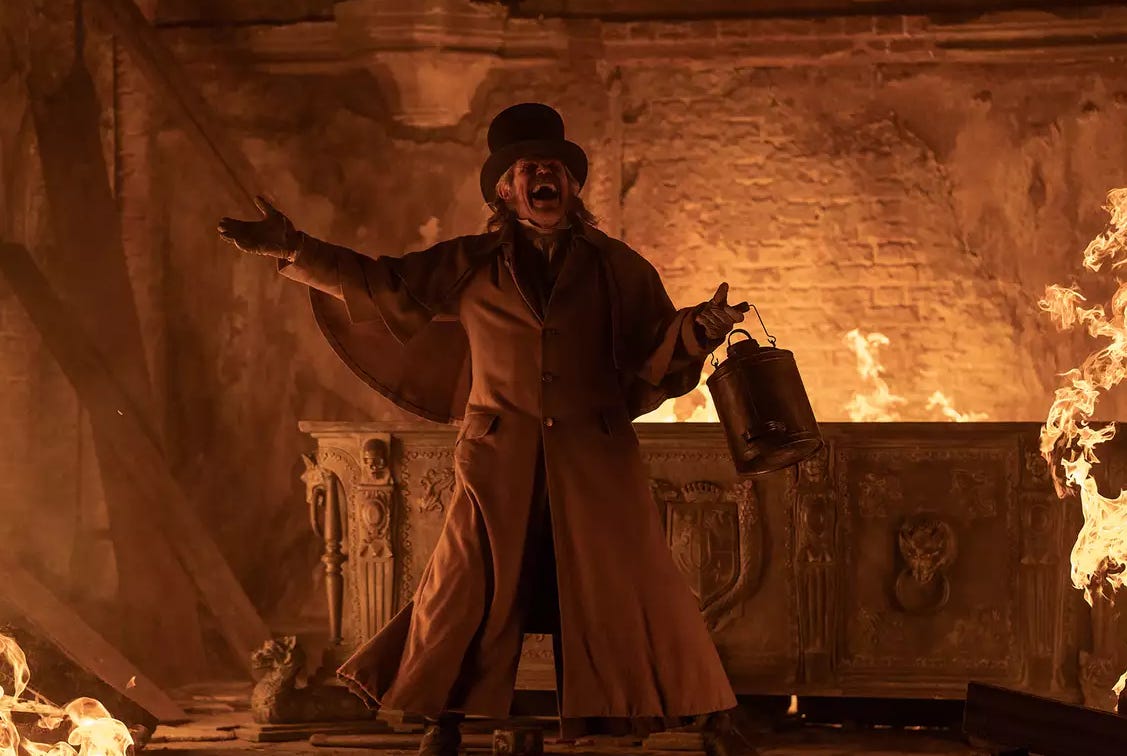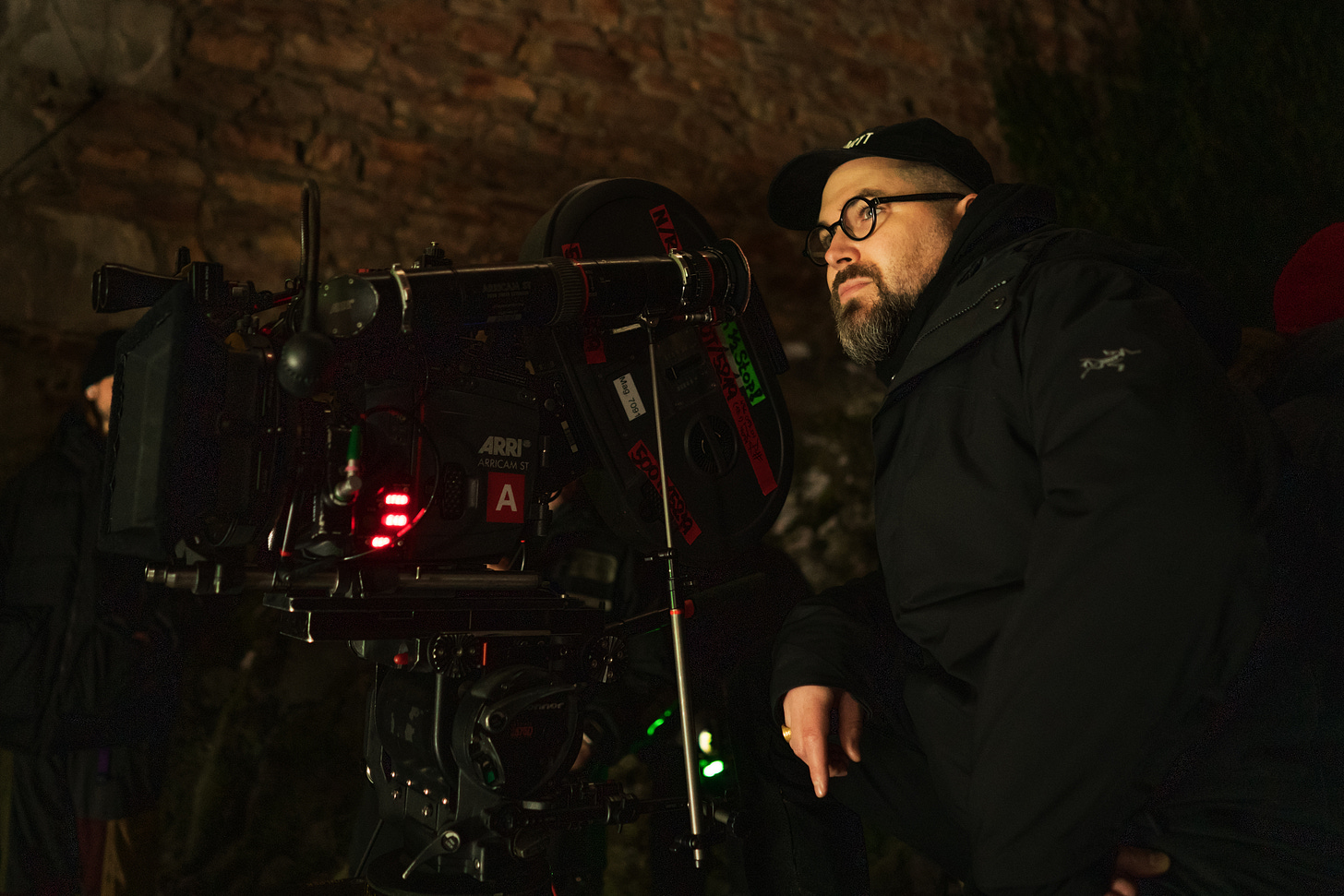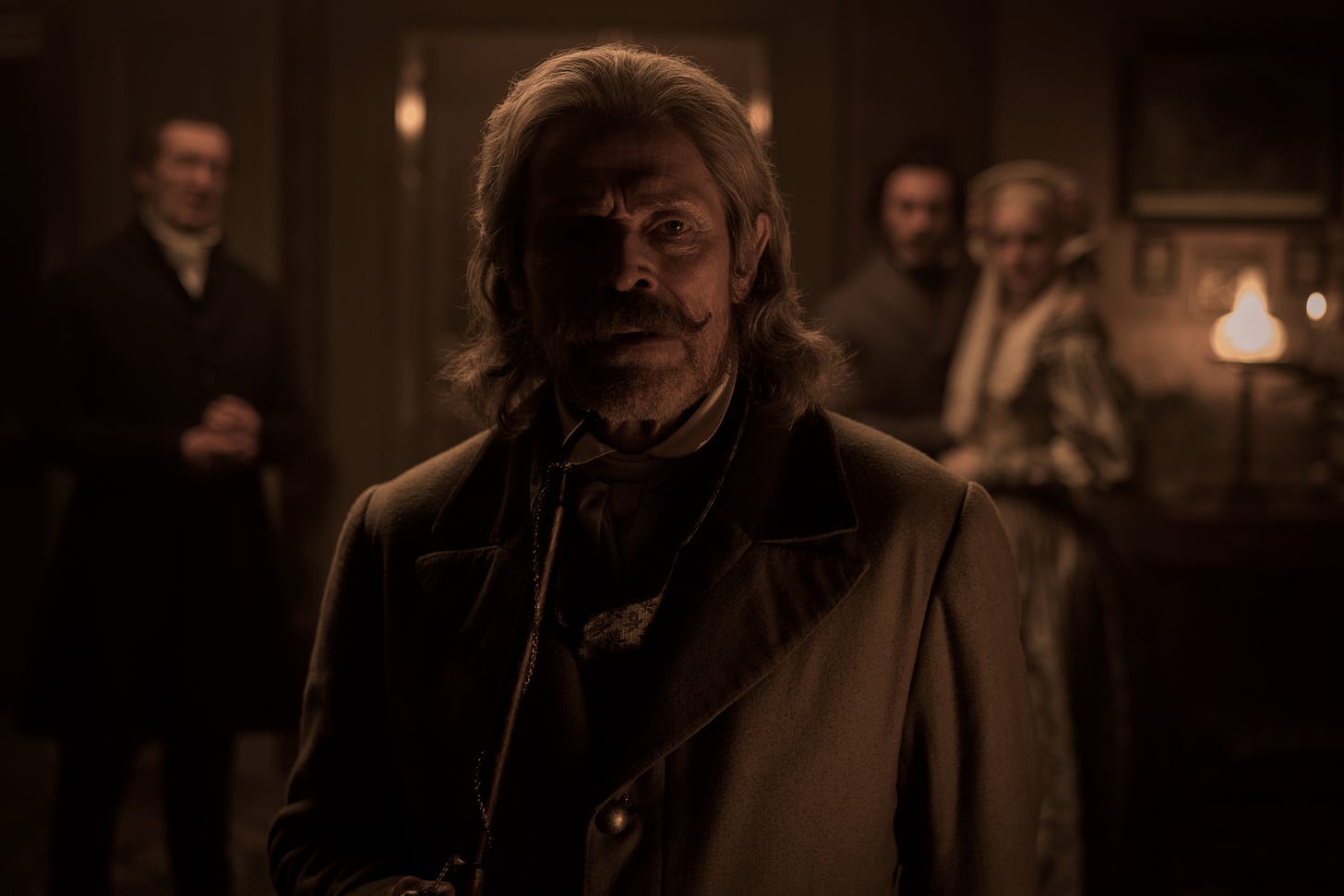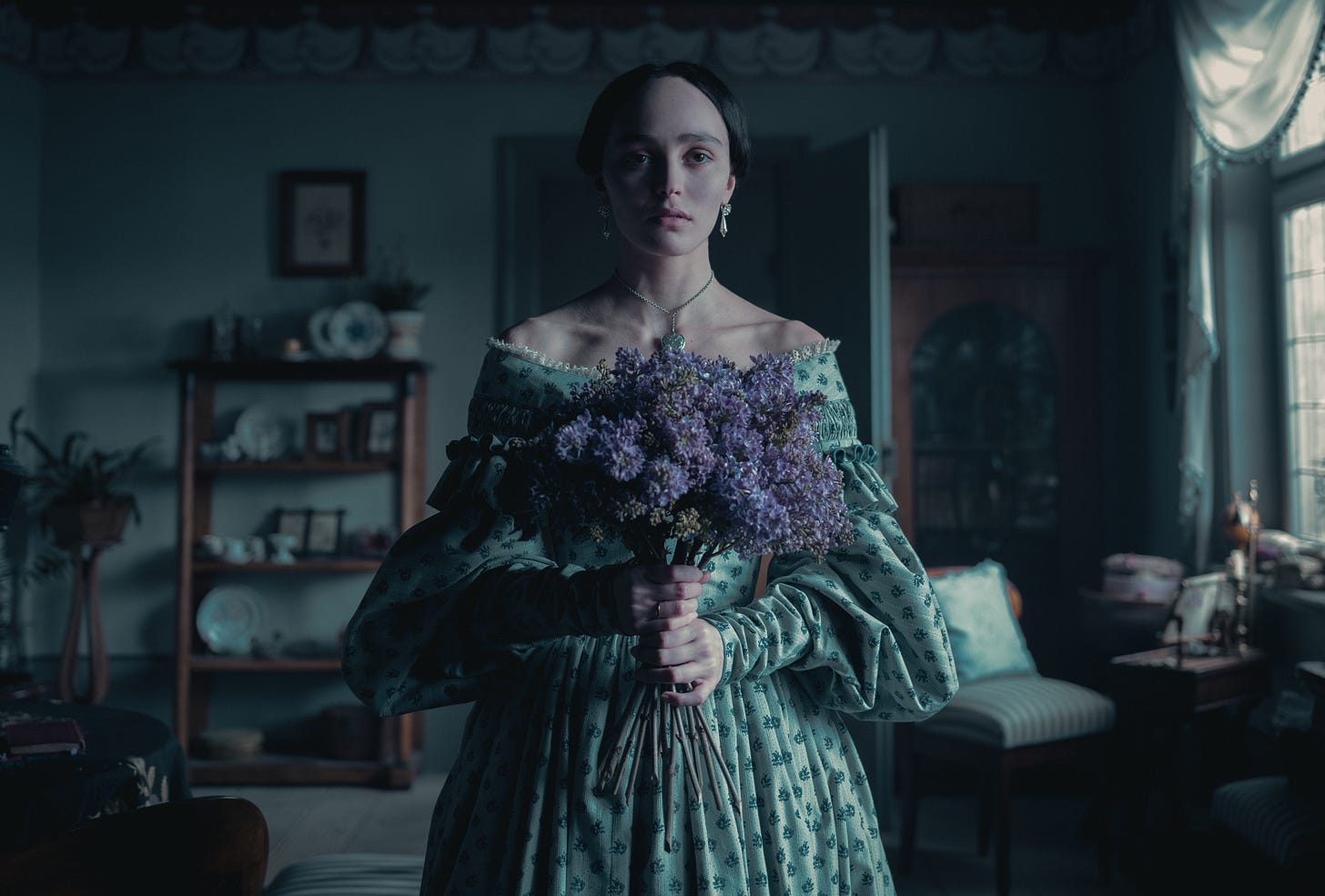Inside 'Nosferatu': A Conversation with Robert Eggers and Willem Dafoe
How a silent horror classic returns to haunt a new generation.
When Robert Eggers announced his reimagining of Nosferatu, anticipation ran high. The 1922 silent horror classic is counted as one of film history’s most iconic depictions of the vampire mythos, its shadowy imagery permanently etched into cinema history.
The film’s grotesque vampire, Count Orlok, remains one of horror’s most enduring images, his elongated fingers and hollow eyes symbolic of something ancient, pestilent, and unshakable. For many, the idea of remaking Nosferatu felt like treading on sacred ground.
Eggers wasn’t interested in imitation. His goal was to capture the eerie essence of the original while creating something that could stand on its own. His approach was not about nostalgia but about rediscovery — digging into the core of what made Nosferatu terrifying in the first place. It’s not about evoking a memory of the past or digging up an old classic for nostalgia’s sake. Rather, it’s about making that past feel viscerally present again.
Reinterpreting classic horror isn’t new territory for Eggers. His debut film The Witch (2015) transported audiences to 17th-century New England, weaving a tale of paranoia, isolation, and spiritual collapse grounded in Puritan fears of witchcraft.
He followed that with The Lighthouse (2019), a hallucinatory maritime horror about two men trapped in a storm-lashed lighthouse, slowly unraveling under the weight of their isolation.
Eggers continued his exploration of myth and history with The Northman (2022), a violent Viking epic inspired by Norse legends, about an exiled prince’s bloody quest for vengeance.
All three films cemented Eggers as a director with a strong focus on historical accuracy, myth, and the psychological underpinnings of fear and violence. Each project feels like an archaeological dig into the past, but Nosferatu is perhaps his most ambitious unearthing yet.
Unlike The Witch, The Lighthouse, and The Northman, which explored themes of repression, madness, and revenge, Nosferatu taps into something more primal: the fear of death itself. By returning to the vampire’s folkloric roots, Eggers moves away from the suave, romanticized vampires of modern media.
During a roundtable interview via Zoom, I joined a small group of journalists to speak with Eggers and actor Willem Dafoe about their creative process. The conversation spanned the nature of darkness, folklore, and the enduring pull of the vampire myth. Their reflections revealed a shared fascination with themes of death and folklore’s power to shape how we tell stories about the unknown.
Unveiling the Shadows
“I saw Nosferatu when I was nine years old. I was very taken by Max Schreck’s performance, the makeup design he did himself, and the movement in the whole thing,” Eggers recalls. One can almost imagine little Eggers terrified but glued to the flickering glow of a TV screen, watching in quiet dread as Schreck’s gaunt, insectile figure slid across walls and through doorways like a specter from a child’s nightmare.
Eggers elaborates, “Everyone’s interested in sex and death, and I was also very taken with Nosferatu and Dracula as a kid. That stuff is taboo — it’s not discussed, and it’s not understood. But then you have this figure who’s undead, with power, stoicism, and a seductive nature. Sometimes it’s a monstrous seduction, like Max Schreck, and sometimes it’s more visually appealing, like Christopher Lee.”
That early encounter stayed with him, shaping his understanding of horror as something that works better through unease and slow dread than jump-scares and shock. For Eggers, Nosferatu became a key example of how subtle movement and shadow could do more than overt scares.
As he grew older, his view of the vampire myth expanded. He watched Klaus Kinski’s ghostly portrayal in Werner Herzog’s Nosferatu the Vampyre (1979) and Gary Oldman’s dramatic, almost operatic turn in Bram Stoker’s Dracula (1992).
Both left an impression, but they also made it clear what he didn’t want. “This vampire in my version is one from folklore — a walking corpse driven by fear and hunger,” he says. Unlike Oldman’s tragic seducer or Kinski’s brooding specter, Eggers’ vampire would not be weighed down by pathos or melancholy. His vampire wouldn’t long for love or redemption — it would hunt.
For Willem Dafoe, Nosferatu had already been part of his career. “I did a movie called Shadow of the Vampire, and of course, I played this character, Max Schreck, the actor. And it was a comedy. A very different movie than this one.” Dafoe explains.
To play Schreck, the actor who played the vampire in the original film, Dafoe immersed himself in the physical language of the 1922 Nosferatu, studying Schreck’s rigid posture, clawed hands, and slow, deliberate movements.
“That project introduced me to Nosferatu on a deeper level, as I studied Schreck’s movements and presence to inform my performance. His physicality, especially the way he would stretch or exaggerate his movements, became something I explored for this role.”
While Dafoe plays the occultist and vampire hunter Professor Albin Eberhart von Franz in Eggers’ film, his role in Shadow of the Vampire was an imagined version of the actor Max Schreck. But that earlier role gave him an intimate knowledge of the body language that made the original Nosferatu so haunting.
Eggers’ approach to Nosferatu is rooted in the vampire’s folkloric origins. “We leaned into the idea that this is not a romantic vampire,” Eggers explains. “There’s nothing seductive about it. It’s a creature of hunger and instinct, and that’s where the fear comes from.”
His vampire isn’t a brooding (or sparkling) anti-hero or a misunderstood monster. It’s a predator driven by need. Eggers grounded the creature in historical realism, drawing on the appearance of decaying corpses and medieval European death iconography. The result is something more primal — less a character with desires, more a force of nature that takes what it needs.
When approaching the design, Eggers explains, “The first question was, ‘What would a dead Transylvanian nobleman look like?’ He’s not based specifically on Vlad the Impaler, but if you look at Vlad’s facial features and hair, you’ll see some similarities.”
To achieve this, Eggers studied portraits of Transylvanian rulers and noted the distinct hairstyles seen among nobles from the Carpathian region and parts of Poland. “There’s this hairstyle that looks a bit like a Ukrainian Cossack style — and you wonder, did he have a full head of hair that rotted away, or was that just the style?” he muses.
To connect back to the cinematic legacy, Eggers worked with prosthetics designer David White to honor Max Schreck’s original Orlok. “The fingers, the nails, the skull shape, and the hunchback are all nods to Schreck,” Eggers says, noting that while they paid homage to the original, they also forged a new identity for the character.
But grounding the vampire in reality was essential. “He needs to be human,” Eggers insists. “The teeth are broken, crooked, and gnarled — but they’re still teeth a human could have. Bad teeth, sure, but not magical ones.”
Revisiting the Vampire Myth
That moment, watching Schreck’s gaunt, otherworldly figure skitter across the screen, planted a seed that would shape Eggers’ fascination with cinematic terror. He’s spoken about how Nosferatu wasn’t just scary because of its imagery — it was scary because it felt ancient, as if it came from a place that existed outside of time. This “timeless dread” would become a guiding force in Eggers’ reinterpretation.
Dafoe’s experience in Shadow of the Vampire was invaluable for his portrayal of Professor von Franz in Eggers’ reimagining. While von Franz is not a vampire, his movements have a deliberate physicality — a “watchful stillness” that Dafoe uses to suggest von Franz’s deep connection to the unseen world. “He’s a man who’s studied darkness his whole life,” Dafoe explains. “So he’s always aware of it, even when it’s not directly in front of him.”
This connection between stillness and threat is something that Eggers emphasizes in his approach to the vampire’s design. “It’s not about making him move fast or slow — it’s about making him move wrong,” Eggers explains.
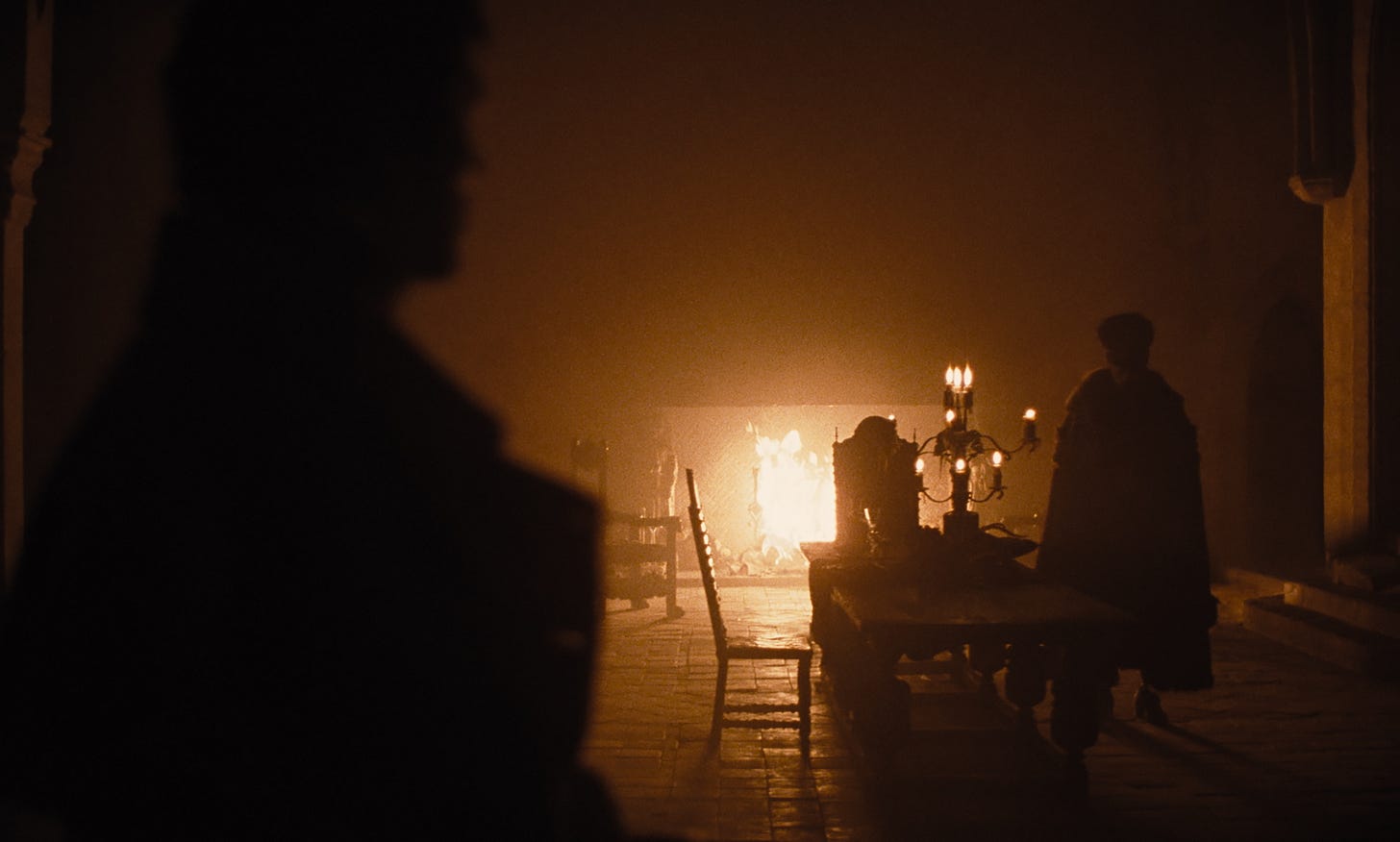
He studied how arthropods, particularly insects and spiders, move in “stuttered, unnatural bursts,” and found ways to bring that unnerving quality into Orlok’s movements. Unlike human motion, which has a predictable rhythm, the vampire’s movement would be unpredictable — too still one moment, then too fast the next. “It’s the violation of expectation that makes it scary,” Eggers adds.
By embedding elements of folklore, entomology, and physical performance into the movement of his vampire, Eggers has created a creature that feels ancient but never familiar. It’s a departure from the suave, tragic anti-hero vampire seen in much of contemporary media.
“The modern vampire is too human,” Eggers explains. “I wanted something closer to a revenant, a thing that exists to feed, to spread pestilence. It’s not thinking about love or legacy. It’s thinking about hunger.” This approach strips the vampire down to its most primal essence — a force of nature, not a tortured soul.
For Dafoe, this primality extended beyond the vampire to his portrayal of von Franz. “I’ve played monsters before, but this role wasn’t about playing a monster,” Dafoe says. “It was about playing a man who understands monsters. And to do that, you have to recognize the monster in yourself.”
Dafoe explains,“Ever since I was a child, I’ve been interested in the other side. I don’t want to make it sound like I’m troubled by it — I actually think it’s a good thing. I’ve always been a little obsessed with death, at least in stories. One of the great strengths of vampire lore is that you have someone from the other side coming to visit the living. That idea is powerful to me because it opens up another world and sparks a kind of dialogue or imagination about our existence and our death. At its core, it’s a philosophical inquiry, and even as a child, I was curious about that. Vampire lore has always had a strong pull for me. Don’t get me wrong, I’m interested in a lot of things, but I think that’s where it comes from. Thinking about death or the undead isn’t strange to me — it comes naturally.”
A New Protagonist
One of the most important differences in Eggers’ Nosferatu is the expanded role of Ellen. Rather than a passive victim, she becomes the film’s emotional core. “It was really exciting,” Eggers says, “because Ellen emerges as the protagonist at the end of the original film, but I thought it would be much more interesting if we were with her from the beginning. One of the things that opened up who this person could be was the concept that Ellen is a somnambulist.”
Eggers explains, “In the 19th century, somnambulism wasn’t just sleepwalking. There were medical theories suggesting that people with somnambulism were better receptors for the ‘other realm.’ This concept became a key to unlocking who Ellen could be — a person who doesn’t fit into 19th-century society. Press notes even say she’s as much a victim of 19th-century society as she is of the vampire itself, which is true. She’s isolated, misunderstood, and burdened by a part of herself that others can’t see. It’s called hysteria, it’s called melancholy, and it manifests in different ways. Before she meets Orlok, the only figure she can connect with, in quotes, is a demon, and that’s tragic.”
This change redefines Ellen’s role, giving her agency and a sense of internal conflict. Eggers’ use of somnambulism draws on 19th-century beliefs about sleepwalking as a bridge to the supernatural, adding another layer to Ellen’s emotional isolation. She becomes attuned to forces beyond ordinary perception, set apart from the world around her.
Eggers continues, “Lily-Rose Depp, who plays Ellen, describes it as ‘a battle against the darkness that all of these characters are fighting’. But to me, Ellen is fighting the same battle internally. I think she has, you know, almost a war going on inside of her.” This internal war reflects not only her personal struggle but also the broader societal forces that weigh on her.
Willem Dafoe describes Professor von Franz’s connection with Ellen’, “For me, I love this relationship, that we’re both outsiders. I come to her and there’s a recognition, there’s a complicity. He sees her, and there’s also an acknowledgment of the darkness. A lot of the other people in the story are pursuing their lives in the way that we all do — seeking comfort, seeking happiness. And in that pursuit, there’s sometimes a denial of the shadow side of life. But von Franz is studied in the things unseen, the things we can’t quite explain. So when he comes to help her, he has great understanding. And I like that he helps her on her journey, even if it has tragic consequences.”
Lingering Shadows
The vampire of folklore, with all its unspoken terrors and cultural baggage, returns in a form that feels as vital as ever. As Dafoe puts it, “The vampire is someone from the other side visiting the living, and that stirs something in all of us.”
Eggers echoes this sentiment, “You can feel the power and weight of that character. I don’t know how else to put it, but Jesus and Dracula both came back from the grave, and they both have more movies made about them than almost anyone else. There’s got to be something to that.”
With Nosferatu, Eggers taps into that timeless power, drawing on folklore, Gothic literature, and silent cinema to create something haunting, tactile, and unforgettable.
Robert Eggers’ Nosferatu is a confrontation with the fears that have followed humanity for centuries. The story remains as unnerving today as it did in 1922. It’s a shadow that refuses to stay in its grave.




